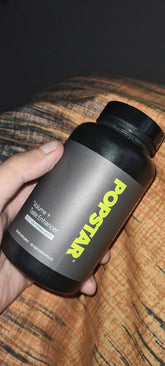The Handkerchief Code is a color-coded system of communication that has long been used to discreetly convey specific personal preferences, interests, and identities. Steeped in LGBTQ subculture and rooted in historical contexts, it serves as a subtle signal for social, romantic, and even sexual interactions. Although it has evolved over time, this code remains an iconic part of queer heritage, a source of curiosity for many, and a powerful testament to the creativity and resilience of those who relied on it to connect with others who shared similar interests. In this article, we’ll explore its definition, historical origins, health implications, common color meanings, and frequently asked questions related to its practice in modern contexts.
Table of Contents
- What Is the Handkerchief Code?
- Where Did the Handkerchief Code Originate?
- Why Is the Handkerchief Code Significant for Men’s Health?
- How Does the Handkerchief Code Relate to Flirting, Consent, and Communication?
- What Are the Common Handkerchief Colors and Their Meanings?
- Frequently Asked Questions
- Conclusion
- References
What Is the Handkerchief Code?
The Handkerchief Code, sometimes known as the Hanky Code or Bandana Code, is a coded language that uses colored handkerchiefs—often placed in the back pocket of one’s pants—to signal particular proclivities, relationship roles, or sexual interests. Historically, these colored hankies helped people find partners or companions with shared preferences long before online communities existed. Today, the code’s presence can be felt at certain gatherings, clubs, and events, although the advent of digital dating apps has transformed how people communicate their desires.
At its core, the Handkerchief Code revolves around a set of color associations. A handkerchief placed in the left pocket traditionally indicates a more active or dominant role, whereas wearing a bandana in the right pocket indicates a more passive or receptive role. Beyond left versus right placement, each color conveys a different message. For instance, a yellow hanky might denote specific fetishes or playful preferences, while a black hanky might suggest more intense or edgy interests. Over time—and from one social circle to another—the exact meanings can vary, but the underlying principle remains constant: a quiet, subtle, yet communicative marker of one’s interests.
While the Handkerchief Code has been most commonly associated with LGBTQ subculture, it also fosters broader discussions about identity, camaraderie, and sexual health. People of various orientations and backgrounds have utilized it to navigate personal connections with fewer words exchanged, reducing social barriers and fears of explicit rejection.
In essence, the Handkerchief Code underscores the human desire for community, belonging, and intimacy. It is a piece of history that reminds us how subcultures found creative ways to circumvent the social limitations of the past, establishing a unique form of communication still recognized today.
Where Did the Handkerchief Code Originate?
The most widely circulated origin story of the Handkerchief Code dates back to the mid-19th century in the United States, particularly during the California Gold Rush era. Urban legends suggest that pioneer men who lacked female partners began using colored bandanas to signal their willingness to lead or follow while dancing. However, it wasn’t until the 1970s that the modern version of the code, linked predominantly to gay male communities, gained widespread popularity in major urban centers like New York and San Francisco.
It is believed that journalist Hank Bell initially referenced this modern adaptation of the code in publications that targeted queer audiences, helping to standardize a list of color meanings. The post-Stonewall era of LGBTQ activism contributed to the code’s momentum, as it became an emblem of liberation and visibility for those craving deeper, more open expressions of their personal identities.
During an era when many LGBTQ individuals faced discrimination and limited safe places, the code offered a subtle yet effective way to find connection. Bars, clubs, and events started adopting the color-coded system, sometimes posting ‘handkerchief guides’ on walls or in pamphlets. Despite the hush-hush environment, an entire subculture blossomed around the code, forging a sense of belonging and safety for those involved.
By the 1980s, the code had become so well-known in certain circles that it spread beyond strictly gay men’s communities into broader kink and fetish groups. People recognized its potential as a nonverbal “shortcut” that facilitated communication without the need for lengthy conversations, ensuring that parties, nightclubs, and social gatherings ran more smoothly. In the decades since, usage has fluctuated, but it remains a recognizable symbol of queer history and subculture to this day.
Over time, the Handkerchief Code has also sparked a cultural dialogue about gender roles, orientation, and consent. As men’s health organizations worked to promote safer sexual practices in the 1980s and 1990s, the code’s subtlety often dovetailed with broader efforts to share important messages about safer sex. While not universally recognized, it serves as a historical artifact reminding us of how secret codes and quiet signals can shape social interactions and subcultural identities.
Why Is the Handkerchief Code Significant for Men’s Health?
Though the Handkerchief Code can seem like a mere historical curiosity, it carries potent lessons and implications for men’s health. At a time when same-sex relationships were stigmatized, such codes enabled men to discreetly communicate their needs and preferences, reducing the risk of harassment or violence. In that sense, the Handkerchief Code also became a way to protect oneself from overt hostility. Today, while open conversations around sexuality have become more widespread, the code’s legacy resonates with ongoing discussions about mental health, identity, and safer sexual practices.
In the context of men’s health, identity plays a significant role in overall well-being. Feeling understood and finding a sense of community helps reduce feelings of isolation. The code once offered a discreet point of entry into shared culture, enabling men to form supportive networks. This has parallels to broader men’s health conversations about the importance of self-expression, emotional openness, and seeking support from like-minded individuals.
Additionally, the code underscores the importance of clear communication in sexual health. Although the color-coded approach isn’t a comprehensive substitute for open dialogue, it helped individuals quickly align with partners who shared their interests and comfort levels. This concept of alignment continues to be vital for preventing misunderstandings that can lead to unsafe or non-consensual situations. Men’s health advocates consistently emphasize the importance of discussing boundaries, desires, and concerns with potential partners. The Hanky Code was an early, albeit imperfect, step in that direction.
Finally, men’s health encompasses psychological and social well-being in addition to physical health. By offering a creative way to express sexuality and explore intimacy, the Handkerchief Code fostered a sense of belonging. For many men from marginalized backgrounds, forging communities through these coded signals provided solace, helped manage stress, and alleviated the mental health burden of secrecy or suppression. While today’s social landscape offers more explicit venues for self-expression, the code’s historical role in promoting mental and emotional stability remains one of its most significant attributes.
How Does the Handkerchief Code Relate to Flirting, Consent, and Communication?
The Handkerchief Code is emblematic of how subtle gestures can convey significant meaning, especially in contexts where direct verbal communication might feel risky or intimidating. People who understand the code can initiate flirtation simply by displaying a particular color in their pocket. The code can ‘break the ice,’ fostering an environment where individuals feel more at ease knowing prospective partners already share an interest or orientation.
Underneath this flirtation lies the core concept of consent. By wearing a certain color, participants signal not only what they desire but also what they are prepared to offer or receive. This can serve as an entry point for a more detailed conversation about boundaries, safety, and mutual needs. While color-coded signals alone do not replace explicit verbal consent, they act as a stepping stone toward a deeper, more informed discussion.
Furthermore, the practice of wearing a hanky can bring an air of playfulness to social gatherings. Traditional color rubrics often sparked conversations and curiosity, inviting people to ask questions like “So, what does that blue hanky in your left pocket mean?” These connections eased tension and supported a more direct conversation about preferences, both parties already acknowledging a shared way of communicating. Though technology and changing social norms have lessened the popularity of the Handkerchief Code, the essence of communicating preferences remains highly relevant in modern dating and relationship-building.
From a health perspective, better communication typically translates to safer behaviors. Clear expression of desires, roles, and boundaries reduces guesswork and misunderstandings, which can help individuals practice safer sex. Within men’s health, specifically, this emphasis on clear communication encourages a culture of respect and consent—critical to emotional well-being and physical safety alike.
What Are the Common Handkerchief Colors and Their Meanings?
One of the most intriguing elements of the Handkerchief Code is the diverse range of colors, each thought to signify a particular interest. Although variations exist based on region or group, a traditional list of widely recognized colors includes:
- Red: Often indicates interest in more intense or BDSM-related play. Left pocket for giving, right pocket for receiving.
- Dark Blue (Navy): Typically denotes an interest in penetrative sexual activities, such as oral or anal intercourse. Again, left side indicates the active role, right side the receptive role.
- Light Blue (Robin’s Egg): Suggests a preference for oral sex. Positioning in the left pocket or right pocket communicates the individual’s desired role.
- Black: Sometimes associated with heavy S&M or leather subcultures. Indicates a preference for strong power dynamics or fetish play.
- Yellow: Historically hints at water-sports-related interests or playful, sometimes kink-centered curiosity. Placement in pockets still matters for roles.
- White: Symbolizes a preference for more vanilla or traditional experiences. Alternatively, some communities used it to denote novices or those new to the scene.
- Grey: Can denote bondage interests, if not other specialized fetishes, depending on the group’s local code card.
- Green: Often indicates an interest in escort services or financial transactions, though this color’s associations can vary widely.
- Purple: May hint at a preference for body worship or certain less common activities, though it can have alternative meanings in some communities.
Keep in mind that these definitions can shift or overlap, and decoding them sometimes requires familiarity with regional or community-specific “hanky charts.” Many who practice the Handkerchief Code relish these nuances and enjoy the flexibility of personal interpretation. Nonetheless, if you see someone sporting a bright piece of fabric in their back pocket at a venue known for queer or kink subcultures, it’s often a snapshot of personal expression.
Beyond the purely sexual connotations, colors can also celebrate different identities and help connect people with shared cultural or personal interests. In modern contexts, variations on rainbow handkerchiefs, trans-flag-themed hankies, or other inclusive color patterns highlight aspects of individuality beyond traditional definitions. In all cases, a respectful, open-minded attitude is crucial, and direct, verbal conversations remain the gold standard for ensuring that everyone’s boundaries and preferences are respected.
Frequently Asked Questions
Is the Handkerchief Code still used today?
Yes and no. While the code isn’t as widespread or necessary as it once was—largely thanks to online forums, apps, and more open conversations about sexuality—it does persist in certain subcultures, particularly among leather and fetish communities. Pride events, specialty clubs, and historical re-enactments of queer traditions occasionally feature the code as both a nod to heritage and a fun social cue.
How do I know which color is right for me?
This depends on the personal interests or experiences you wish to signal. The original color list is extensive, with each shade representing different proclivities and roles. If you’re new to the code, you may want to start by researching commonly accepted color guides or speaking with experienced community members who can help you identify which hanky color aligns best with your preferences or curiosities.
What if I misinterpret someone’s hanky color?
Accidents or misunderstandings can happen, especially since color definitions can differ from place to place. The safest course of action is to politely ask for clarification. Express genuine curiosity and ensure you respect any boundaries. Communication is key, and most individuals will appreciate your effort to avoid assumptions. Ultimately, if a conversation leads to confusion about meaning, it’s best to talk openly about desires and limitations.
Can wearing a certain color lead to stigma or judgment?
While the code is meant positively at events or venues friendly to such expressions, there’s always a possibility of encountering people who misunderstand or disapprove. Whether you choose to carry a hanky is a personal decision, and it often depends on the prevailing attitudes within a given environment. Many who wear hankies in public do so in spaces known to be accepting (like certain bars, clubs, or festivals). If you’re unsure about reception, consider carrying a more understated color or ensuring you’re in a setting where safety is a priority.
Is the Handkerchief Code exclusively for gay men?
Historically, it was predominantly used by gay men, particularly in the leather scene. Over time, though, other groups have adopted or adapted the system to suit their own preferences, including heterosexuals and various members of the broader LGBTQ spectrum. The code can be interpreted with flexibility, so it’s not strictly limited by orientation or gender.
Does the Handkerchief Code promote safer sexual practices?
In some respects, it can promote a clearer conversation about expectations. The code alone doesn’t replace frank dialogue about protection, consent, and sexual health. However, it can serve as an icebreaker that leads into these crucial conversations. By advertising your preferences nonverbally, you may streamline your search for compatible partners who share a similar safety outlook, though explicit communication remains necessary to ensure mutual understanding.
How can I use the Handkerchief Code while respecting others’ boundaries?
First, understand that not everyone around you will be fluent in hanky etiquette—and not everyone is comfortable discussing sexual preferences overtly. Always approach potential partners politely and with sensitivity. Before initiating deeper or more intimate conversations, confirm that they are open to discussing the code. Consent is an ongoing process, and wearing the hanky is merely the first step in establishing interest.
Are there health concerns tied to the Handkerchief Code?
From a physical health standpoint, the code itself poses no inherent dangers as it’s merely a signaling mechanism. Potential health concerns arise if individuals are not informed about safer sex practices or if they engage in high-risk behaviors without proper safeguards. Men’s health advocates recommend regular STI testing, open conversations about boundaries, and the use of protection, regardless of whether individuals use the Handkerchief Code. Emotional well-being should also be considered, ensuring people enter relationships or encounters with a solid understanding of their own limits and comfort zones.
How does Handkerchief Code usage intersect with modern dating apps?
Dating applications have largely supplanted the necessity for coded signals. However, some app users still mention hanky preferences in their profiles, referencing color codes either ironically, as a tribute to subcultural history, or as a sincere expression of what they are looking for. The code can offer a playful twist on the standard “interests” section, merging historical charm with contemporary matchmaking methods.
What if I want to incorporate modern designs or pride flags into the code?
Creativity has always been integral to the Handkerchief Code. Many people today choose to wear pride flag-themed hankies to showcase their identity more broadly, or they might choose patterns that reflect their specific local community. If you’re in a group that recognizes these design spins, go for it! The most important aspect is that you and your peers share a mutual understanding of what the pattern represents.
Is the Handkerchief Code relevant for exploring one’s identity?
Absolutely. The code can be a fun, low-pressure way to explore different facets of one’s identity. Wearing a particular color might symbolize curiosity or interest in a new dynamic you’ve never tried before. Even if you eventually discover that the activity isn’t for you, the process of signaling and talking about it can offer valuable insights into your own desires and boundaries.
Conclusion
The Handkerchief Code transcends its origin as a practical tool for discreet communication and stands as a living piece of cultural history. A testament to human resourcefulness, this color-coded system has enabled countless men—especially gay and bisexual men—to express themselves more freely in environments that were not always safe or welcoming. By wearing a single colored hanky, participants gained a subtle, almost secret way to seek out camaraderie, intimacy, and belonging. Even in the modern digital age, its core themes of identity, consent, and self-expression endure.
For men’s health, this code’s historical development reminds us of the significance of supportive communities, open (albeit coded) communication, and the pursuit of meaningful human connection. While newer, more direct forms of interaction dominate our era, the Handkerchief Code remains an evergreen reminder: communication about preferences can be both creative and vital. Ultimately, whether you choose to embrace the code or simply appreciate its heritage, its lessons about consent, inclusion, and personal authenticity continue to resonate.
References
- Rubin G. (1997). The Miracle Mile: South of Market and Gay Male Leather, 1962–1997. In D. Berger (Ed.) Reclaiming San Francisco. City Lights Books.
- Green, A. I. (2008). The Social Organization of Desire. University of Chicago Press.
- Foucault, M. (1978). The History of Sexuality Vol. 1: An Introduction. Pantheon Books.
- Chauncey, G. (1994). Gay New York: Gender, Urban Culture, and the Making of the Gay Male World, 1890-1940. Basic Books.
- Marcus, E. (2002). Making Gay History: The Half-Century Fight for Lesbian and Gay Equal Rights. HarperCollins.
- Smith, C. (2018). “The Hanky Code: Historical Means of communication in the gay men’s leather scene.” Journal of Sexual Subcultures, 12(2), 45-59.
- Centers for Disease Control and Prevention. (2021). “STS Prevention.” CDC.gov. Retrieved from: https://www.cdc.gov




















































